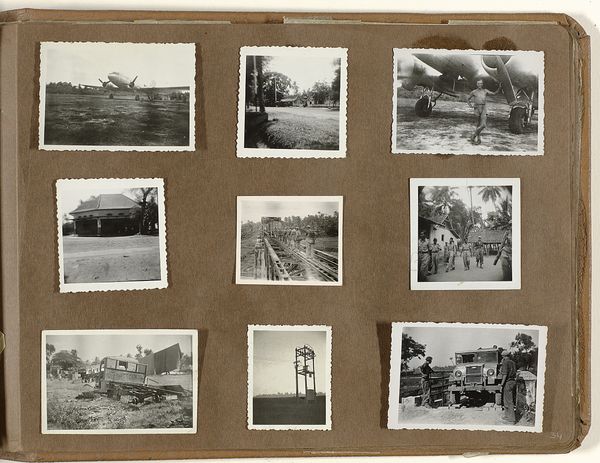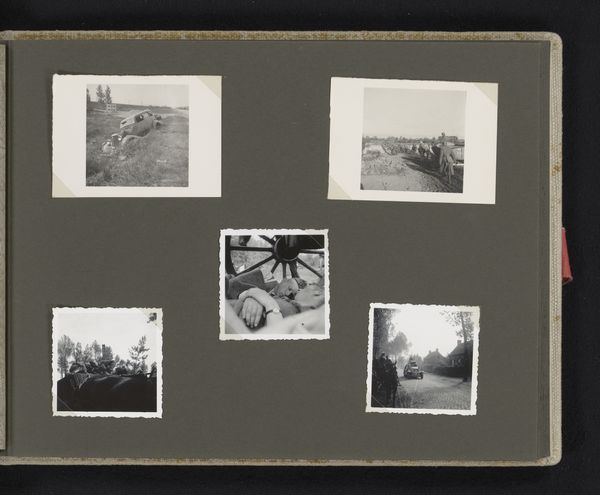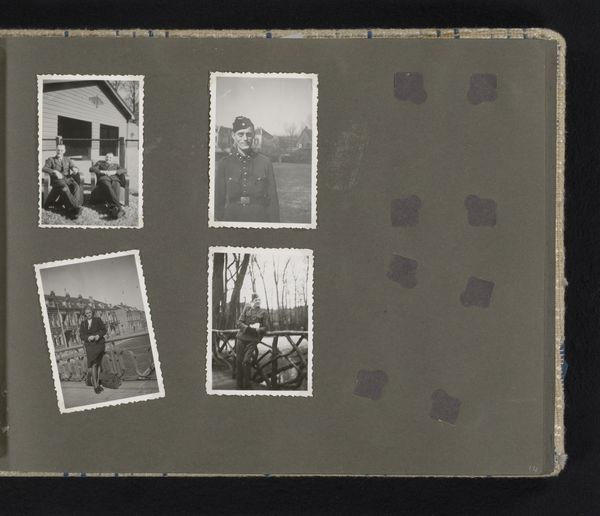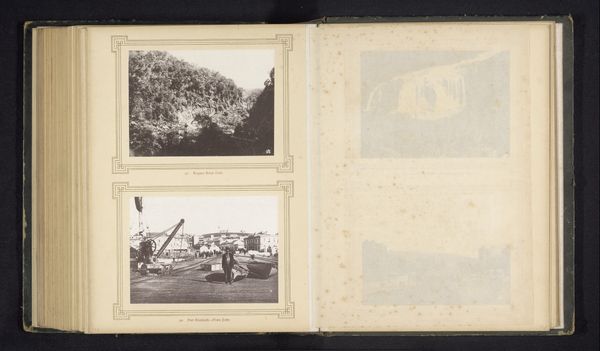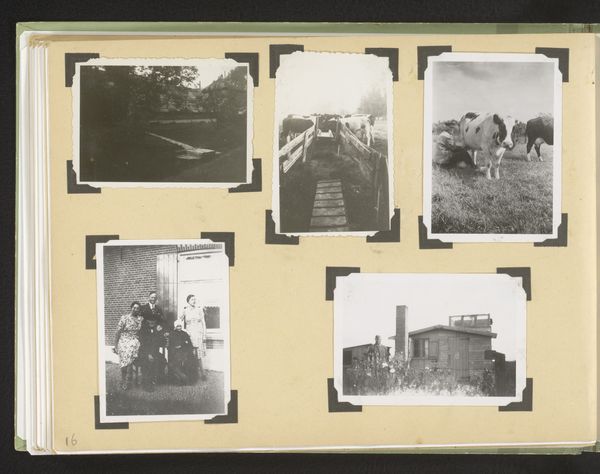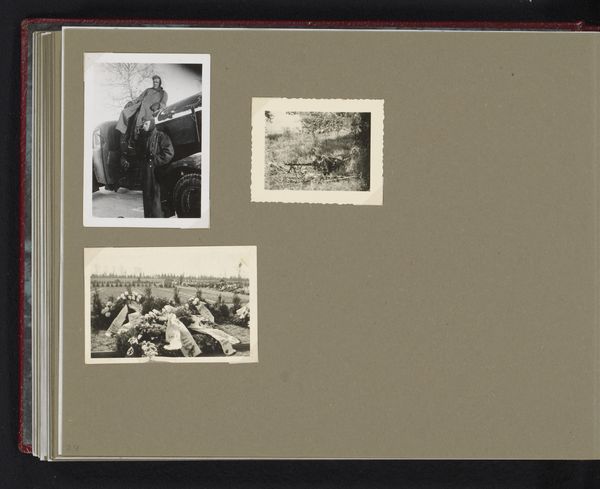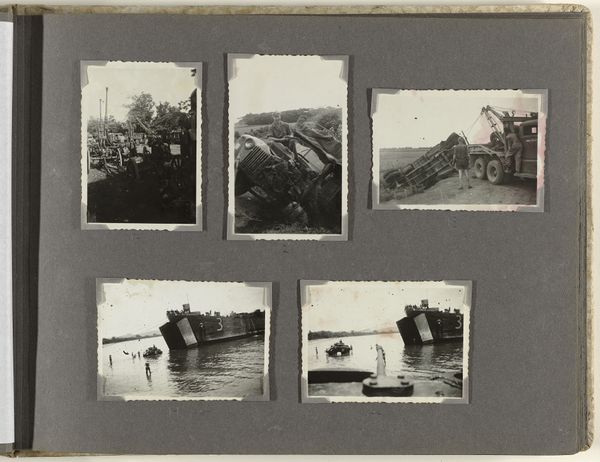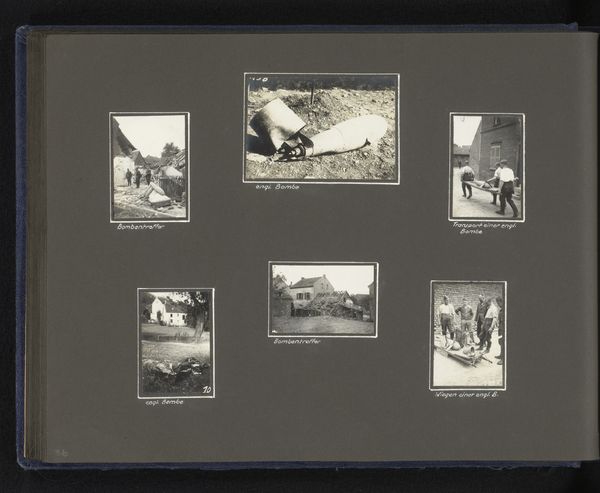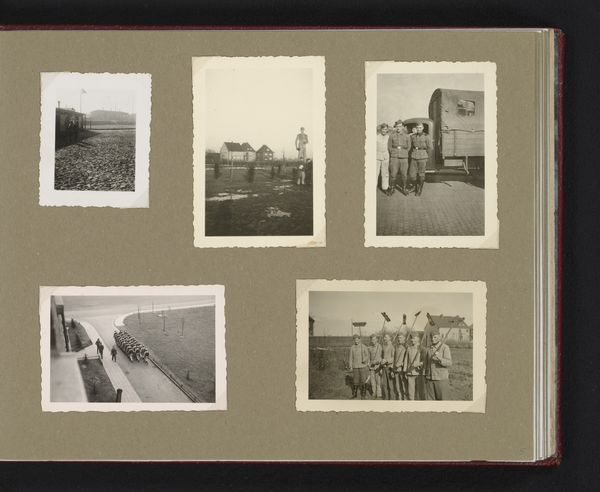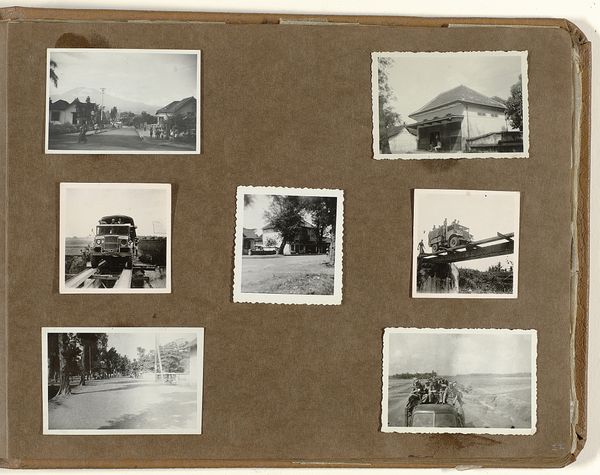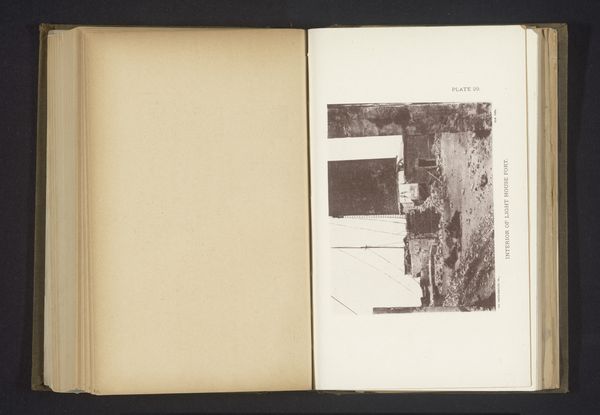
print, photography, albumen-print
#
paper non-digital material
# print
#
landscape
#
photography
#
paper medium
#
albumen-print
Dimensions: height 240 mm, width 319 mm
Copyright: Rijks Museum: Open Domain
Editor: Here we have "Overstroming," a photograph from the 1930s, likely an albumen print on paper, showing what appears to be the aftermath of a flood. There’s something somber about these images, almost a feeling of abandonment. What strikes you about this piece? Curator: The photograph's focus on environmental aftermath invites us to consider power dynamics embedded within. Whose stories are being told, and perhaps more importantly, whose are being omitted? What kind of labor, often racialized and gendered, goes into recovery after such devastation, and is that represented here? Editor: That's an interesting perspective! I was mostly seeing it as a historical document, but I hadn't considered the social narratives it implies. The images definitely center the landscape, with people only present in the background, if at all. Does the landscape itself have a particular significance here? Curator: Absolutely. Consider landscape as a site of cultural construction, reflecting colonial exploitation and resource extraction. Are we looking at images that inadvertently glorify a vision of control over nature, or do they offer a glimpse into the vulnerability of specific communities within a larger global system? Who took the photo, and what was their role? Editor: I don’t know who took it, which does leave open a lot of questions about intent. Looking again, I'm wondering if this “abandonment” I initially sensed reflects the potential displacement of local communities. Curator: Precisely. How does this photographic album contribute to a broader narrative of colonialism, environmental change, and human resilience or dispossession? Editor: I’m seeing this piece so differently now. I'll definitely have to think about photographic landscapes more critically in terms of social and environmental power structures. Curator: It's a vital lens through which to understand visual history. We must continue interrogating these seemingly simple images to unveil their complex social and political narratives.
Comments
No comments
Be the first to comment and join the conversation on the ultimate creative platform.
